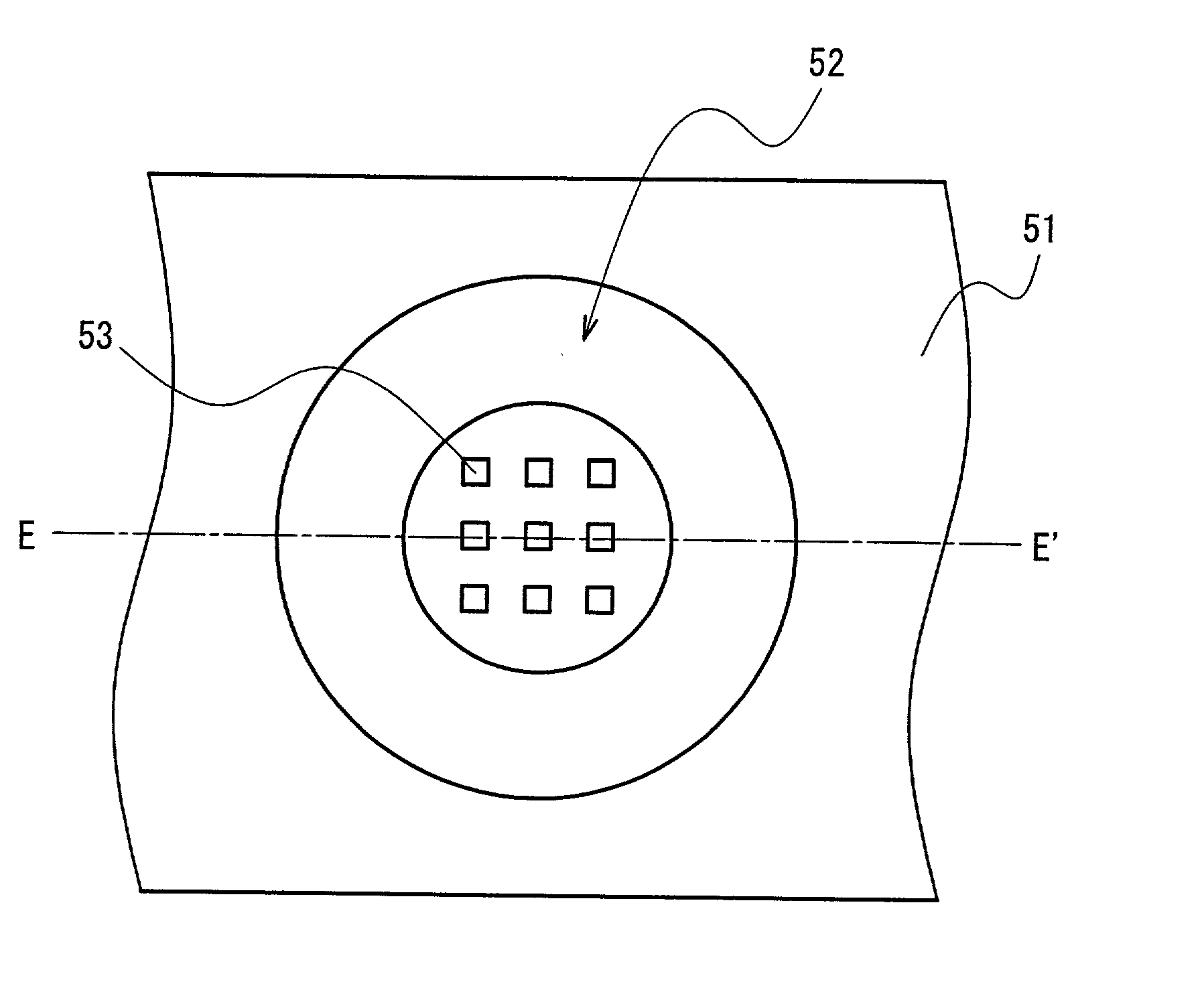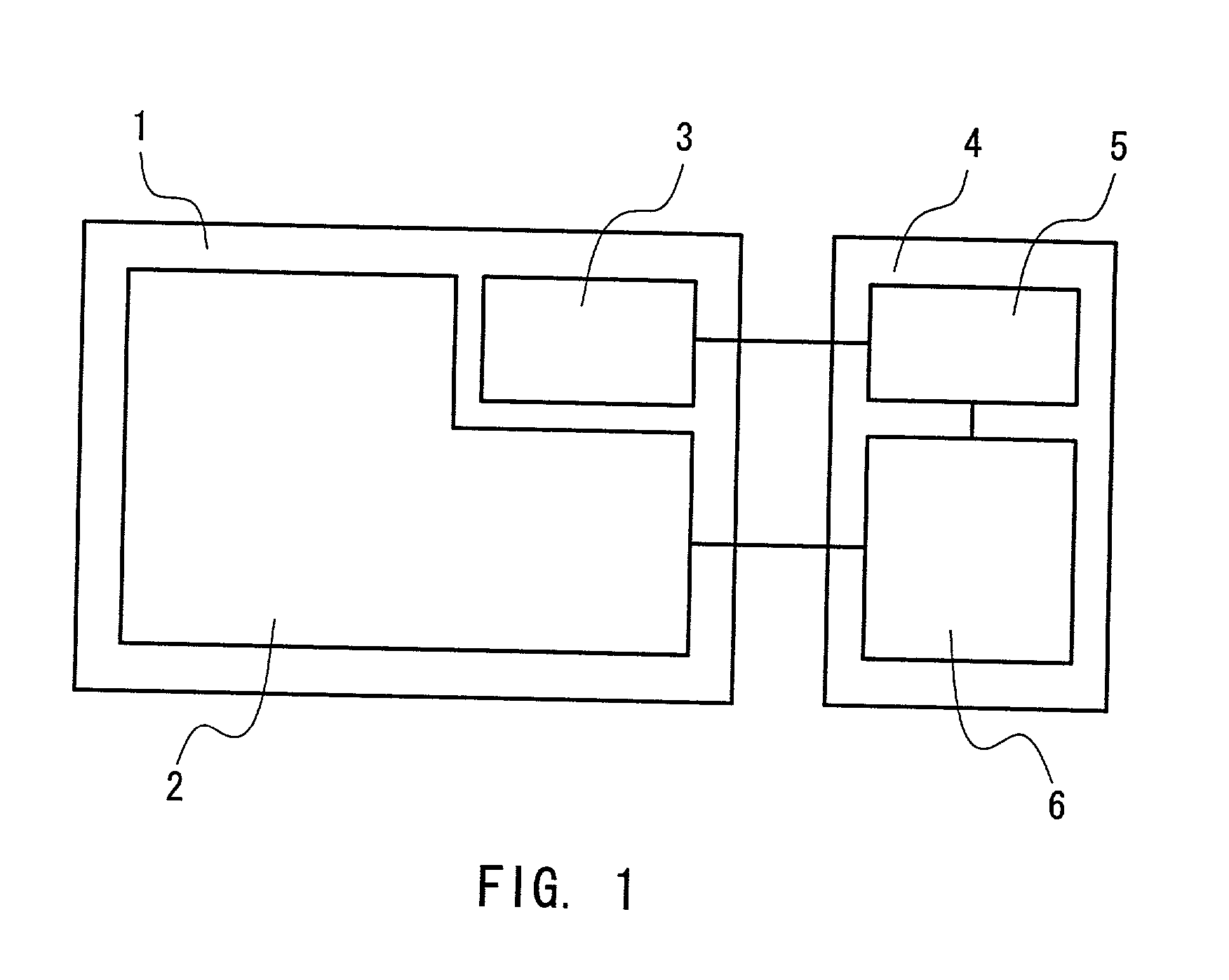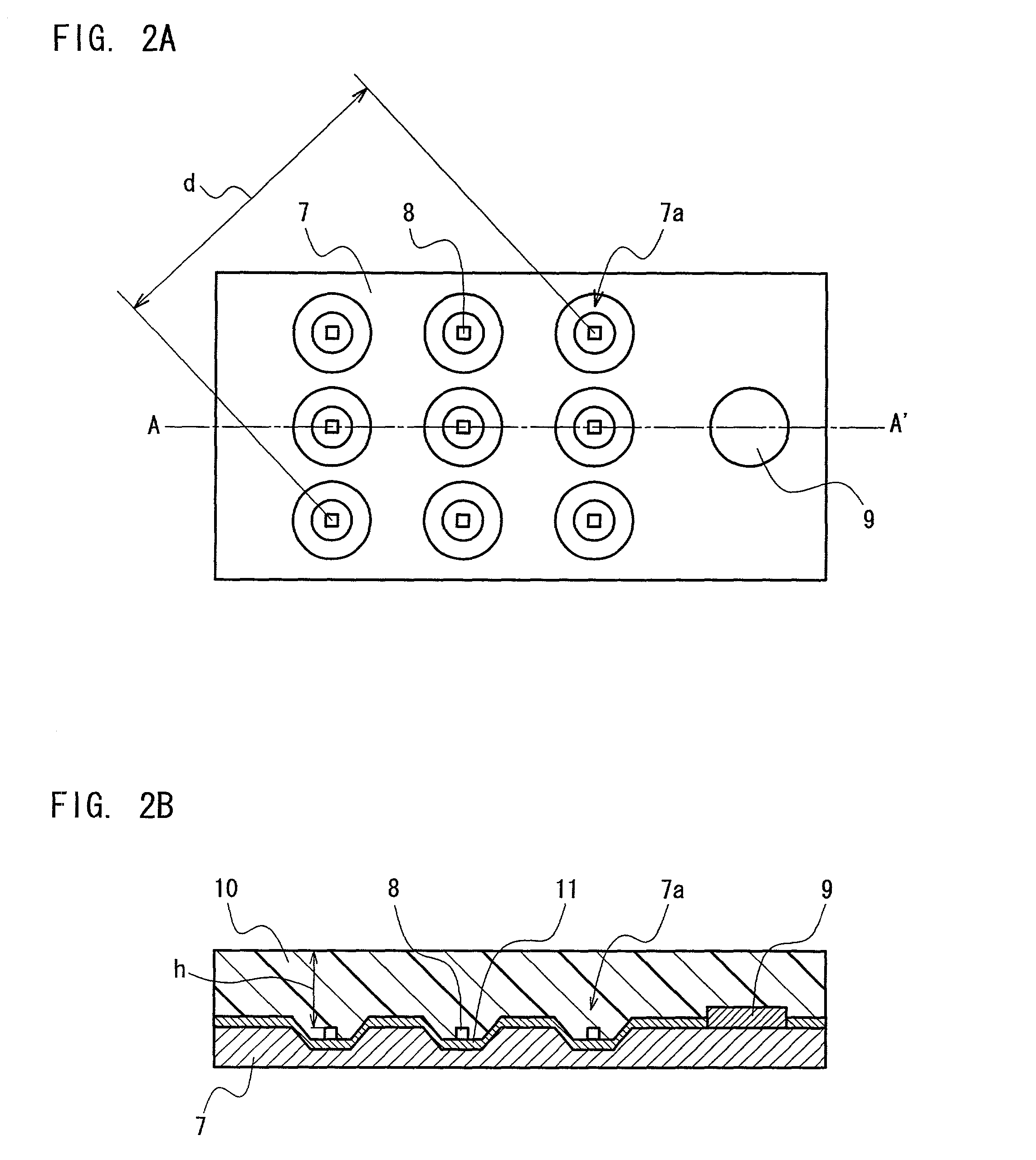Lighting device
- Summary
- Abstract
- Description
- Claims
- Application Information
AI Technical Summary
Benefits of technology
Problems solved by technology
Method used
Image
Examples
first embodiment
[0044] First Embodiment
[0045] FIG. 2A is a plan view of an LED light source unit according to the first embodiment of the present invention. FIG. 2B is a cross-sectional view taken along the line A-A' in FIG. 2A. In the LED light source unit, a plurality of LEDs 8 emitting a single color of light and one photodetector 9 are mounted on a substrate 7. The LEDs and the photodetector 9 are covered with a transparent resin layer 10 so as to be integrated into one body. Since the photodetector 9 detects light propagated through the transparent resin layer 10, only one photodetector suffices with respect to a plurality of the LEDs to detect the intensity of the light emitted from the LEDs 8 adequately.
[0046] The substrate 7 preferably is made of metal so as to diffuse and dissipate heat generated by the LEDs 8 effectively. Alternatively, the substrate 7 may be made of epoxy resin or may be a composite substrate made of epoxy resin mixed with alumina. A recess 7a is formed on the substrate ...
second embodiment
[0055] Second Embodiment
[0056] FIG. 3A is a plan view of an LED light source unit according to the second embodiment of the present invention. FIG. 3B is a cross-sectional view taken along the line B-B' in FIG. 3A. In this LED light source unit, LEDs 12 to 14 that emit red, green, and blue light, respectively, are mounted on the substrate 7. These elements are covered with the transparent resin layer 10. At one end portion of the transparent resin layer 10, photodetectors 15 to 17 for each color are provided.
[0057] The photodetectors 15 to 17 are provided with spectral filters 18 to 20, respectively. These spectral filters 18 to 20 allow lights in the wavelength ranges corresponding to those emitted from the LEDs 12 to 14, respectively, to pass through, so that a photo-detecting device that deals with the respective luminescent colors is provided. With this construction, the photodetectors 15 to 17 measure the intensity distribution of the light propagated through the transparent re...
third embodiment
[0060] Third Embodiment
[0061] FIG. 4A is a plan view of an LED light source unit of the lighting device according to the third embodiment of the present invention. FIG. 4B is a cross-sectional view taken along the line C-C' in FIG. 4A. According to this embodiment, LEDs for respective luminescent colors are sequentially turned on by applying pulse voltage, so that a photodetector smaller in number than the colors can detect the intensities of multiple colors of light emitted from the LEDs.
[0062] As shown in FIGS. 4A and 4B, the LED light source unit includes LEDs 22 to 24, which emit red, green, and blue light, respectively. These LEDs 22 to 24 are covered with the transparent resin layer 10. The transparent resin layer 10 includes an optical waveguide unit 10a that extends from one side of the substrate 21 to the back portion of the substrate 21. In the vicinity of the backside of the substrate 21, a photodetector 25 is placed so as to face the end portion on the side of substrate ...
PUM
 Login to View More
Login to View More Abstract
Description
Claims
Application Information
 Login to View More
Login to View More - R&D
- Intellectual Property
- Life Sciences
- Materials
- Tech Scout
- Unparalleled Data Quality
- Higher Quality Content
- 60% Fewer Hallucinations
Browse by: Latest US Patents, China's latest patents, Technical Efficacy Thesaurus, Application Domain, Technology Topic, Popular Technical Reports.
© 2025 PatSnap. All rights reserved.Legal|Privacy policy|Modern Slavery Act Transparency Statement|Sitemap|About US| Contact US: help@patsnap.com



